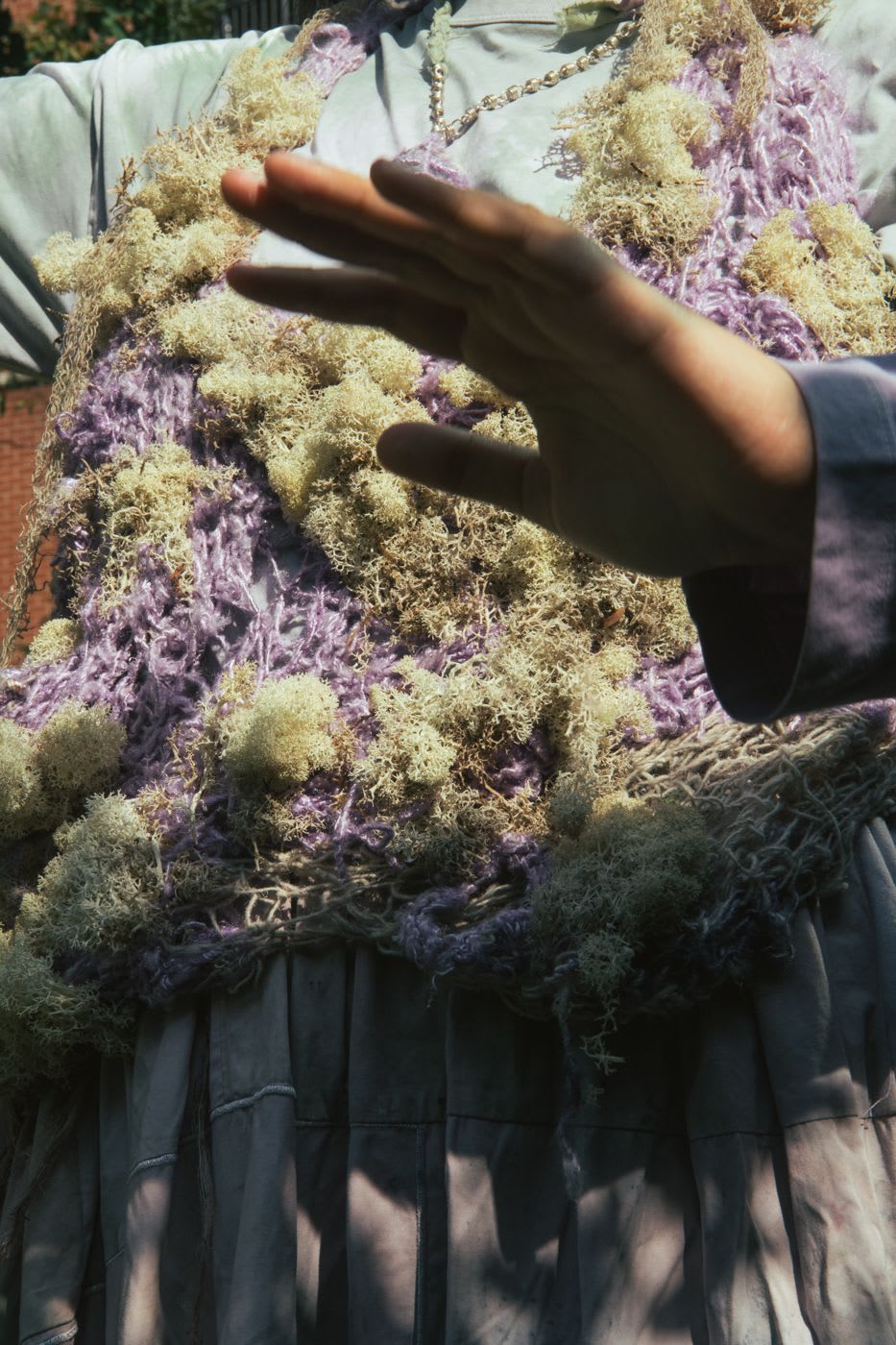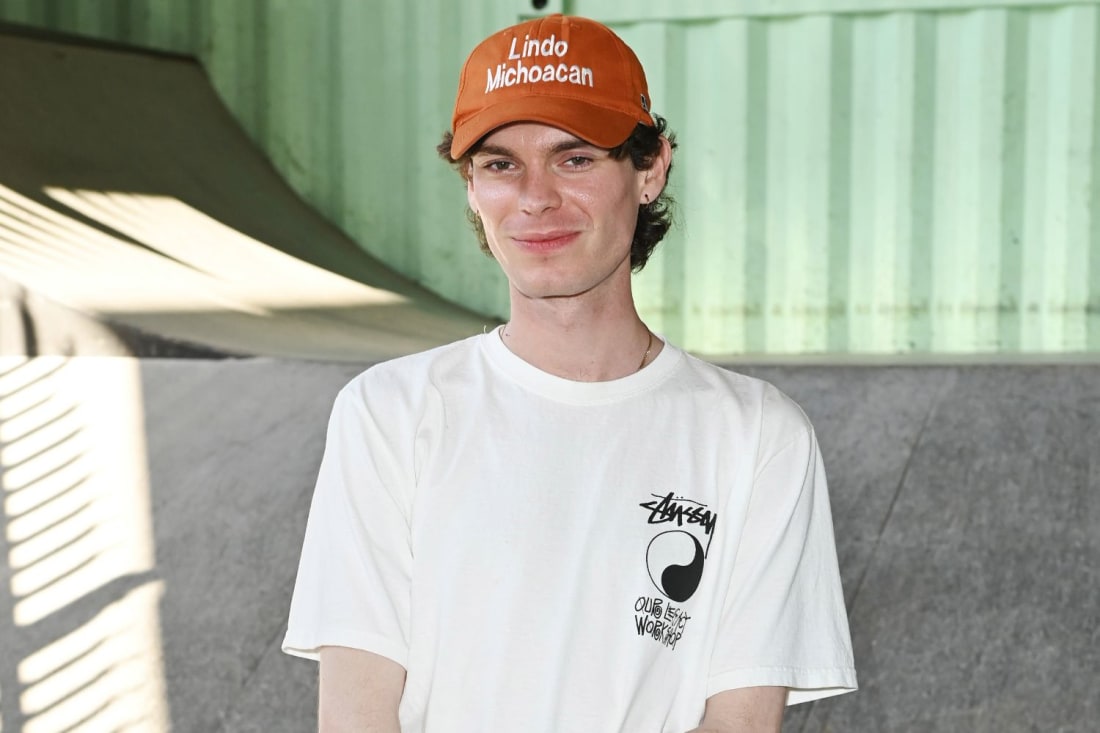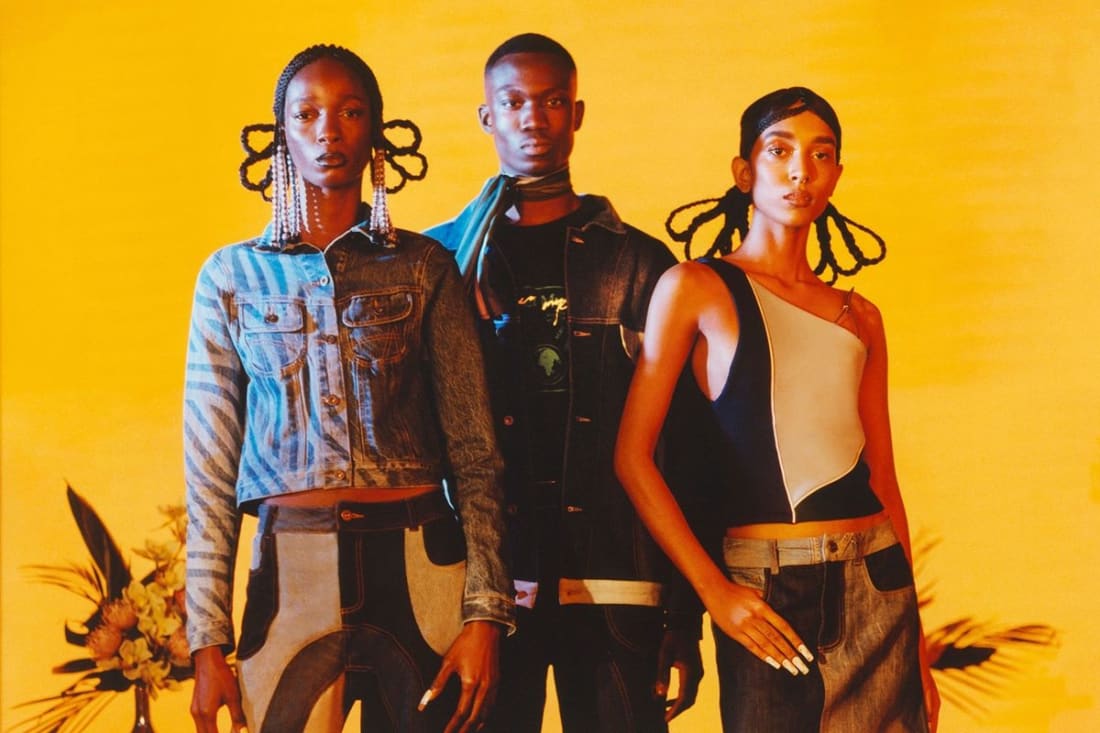Eirinn Hayhow’s puffer jackets will chill you out
The designer uses homegrown crystals and dyes foraged in Kent to craft conscious clothes that are full of feeling
The designer uses homegrown crystals and dyes foraged in Kent to craft conscious clothes that are full of feeling
Fashion week can induce anxiety at the best of times. Whether you’re rushing between shows and making small talk with people you sort of know, or secretively loading a live stream and anxiously refreshing Vogue Runway when you’re meant to be doing something else, the fast pace, constant socialising and existential crises about all these new clothes can get to us all. That’s why Eirinn Hayhow’s first London Fashion Week show, with its calming outdoor setting and puffer coats stuffed with lavender, chamomile and valerian to soothe anxiety, felt like a respite from the chaos.
Amid the wild greenery of Phoenix community garden, a calm oasis tucked away behind Tottenham Court Road station, the diverse cast of models couldn’t have had a less ostentatious catwalk. It was the antithesis to the classic runway show where guests are crammed into dimly lit rooms like sardines. But Eirinn has always done things differently.
Her latest collection is brimming with unconventional materials like live moss, grass stuffed puffer coats and even hair from her own dog – it’s the only fabric that’s not strictly vegan, but she collected it over time and her dog is fine! Set to a soundtrack of birdsong, thunder and falling rain, the models carefully made their way through the garden. They paused to dance, becoming one with nature as clothes got caught on branches or leaves were tucked into waistbands and sleeves.
The materials in the collection aren’t sourced conventionally, but foraged from Margate and its surrounding areas, where Eirinn is based. “I go up to the woods to get oak galls and oak heart,” she explains. “You can get willow. You can get silver birch elderberries. You can forage ivy and nettles for green dye.”

This season, netted dresses were dyed with foraged nettles, trousers were made from coffee grain leather, tops from live moss, dresses were embellished with lab grown crystals and discoloured brown puffers were stuffed with valerian, lavender, grass and chamomile to promote calming, anti-anxiety properties. It’s as much a science experiment as it is a fashion collection. “I have some material science knowledge so I play around with the pH balance to extract the colour from foraged plants,” Eirinn explains. “I reuse the plant matter and the wastewater and turn them into biomaterials. Everything is circular.”
Eirinn’s latest body of research focuses on how clothes can improve our mental health, not just through the dopamine boost that comes from wearing outfits you love, but through incorporating healing flowers and herbs into the materials themselves. This all started with Eirinn’s sobriety journey which prompted her to think not just about what she puts in her body, but also what she puts on it. “When you wear the puffers, you can smell the scents and the idea is that if you’re wearing materials that are infused with these plants, then your day to day life could potentially be easier,” she says. “I can’t confirm that, but this is my body of research. I am really interested in the specific healing properties of the things that I forage, and how they can help our bodies in some way.”

This in depth material research means that Eirinn takes a much slower approach to fashion than other brands. Most of the more intricate pieces in the collection won’t be reproduced on a bigger scale. Instead, they are an artful meditation on our relationship with nature, asking us how we can work with it in mutually beneficial ways to be kinder to the planet while being kinder to ourselves. At times, an eerie atmosphere descends on the show as models become more and more at one with the garden, like the last survivors of a climate apocalypse going back to living off the land because they have no other choice.
The overall impression, though, is one of curiosity. This exploratory new fashion proposition eschews greenwashing for a more radical approach to sustainability. What’s left is an intentionally eclectic collection designed to remind us to slow down, be conscious and return to the earth.



